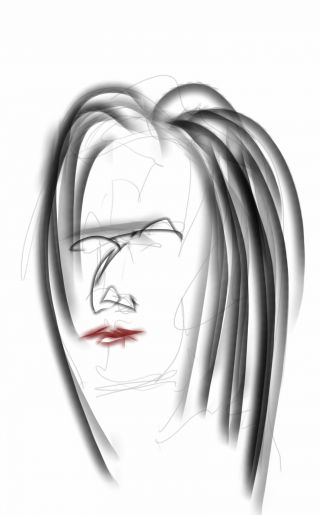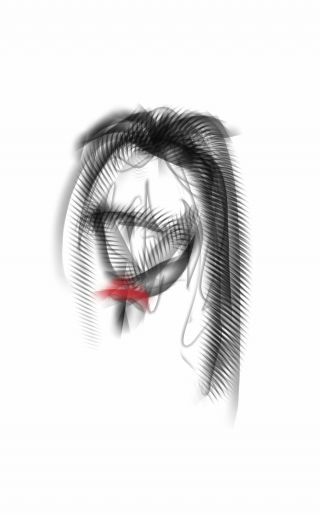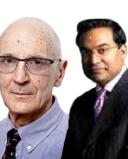Bias
Which Hair Color Induces the Strongest Physical Attraction?
Is the latest research bad news for Scarlett Johansson and Nicole Kidman?
Posted September 1, 2015 Reviewed by Kaja Perina
By Raj Persaud and Adrian Furnham
Startling new psychological research challenges previous thinking that hair color is merely about personal preference. Instead, a massive consensus appears to exist on which hair color is preferred, revealing such severe prejudice associated with the tint of your locks, that the preference could border on racial discrimination.
For example, Nicolas Guéguen from the Université de Bretagne-Sud, in France, recently published a paper entitled "Hair Color and Courtship: Blond Women Received More Courtship Solicitations and Redhead Men Received More Refusals," in the academic journal Psychological Studies.

In the first study he conducted, female confederates of the experimenter, wearing blond, brown, black or red wigs, were observed while sitting in a nightclub. In a second study, male collaborators wearing different colored wigs asked women in a nightclub for a dance.
The study found that blond women were more frequently approached by men, whereas blond males did not receive more acceptances to their requests. However, in both conditions, red hair was associated with significantly less attractiveness.
Guéguen points out that previous surveys across the globe find that about 90 percent of people have dark hair, whereas only 2 percent of population are blond and 1 percent are redheaded. One theory had been that women who change their hair color, prefer less common tints, so as to increase their visibility and attract male attention.
Guéguen cites a previous study, in which blond female door-to-door fundraisers received more donations than their brunette counterparts. Another study found waitresses with blond hair got more tips. And in yet another previous study, female subject in their early twenties, were asked to hitchhike while wearing a blond, brown or black wig. Blond, compared to brown or black hair was associated with more male drivers stopping to offer rides. No effect from hair color was found on female drivers who stopped.
In Guéguen’s most recent research, a female confederate of the experimenter sat in a nightclub for one hour, while researchers monitored how many men approached her. The experiment was carried out on 16 different nights in a 4-week period. So each confederate tested four different wigs four times. Overall,127 men approached the women wearing blond wigs, 84 men approached women wearing brown wigs, 82 went up to women wearing black wigs but only 29 approached women with red wigs.
Guéguen cites previous research which found over 80 percent of those surveyed express a dislike for people with red hair. The study also showed that the skin color of most redheads was the most disliked of the eight skin colors presented.
Given that women are found to be less impressed with mere physical appearance when evaluating how attracted they are to men, the researchers ran the experiment, this time using male confederates. In the second phase of the experiment, while slow songs were played in the nightclubs, four 20-year-old male confederates were instructed to ask a woman for a dance.
27.5 percent of the women said yes to men wearing a blond wig, 30 percent accepted invitations from the men with brown wigs, 35 percent accepted invitations from men with black wigs and only 13.8 percent for men who donned a red wig.
Although psychologists argue that women are less interested in the physical characteristics of men when evaluating attractiveness, women were dramatically less responsive to courtship requests from redhaired men.
Viren Swami and Seishin Barrett, psychologists at the University of Westminster, have conducted a similar experiment. In their study the female confederate, a natural brunette, dyed her hair blond and red. She sat in various nightclubs over many weeks, and the experimenters observed and counted how many men approached her during a one-hour period. When she was blond, 60 men came up to her, while brunette the figure dropped to 42 and then when red, male interest languished at just 18 approaches.
Swami and Barrett also surveyed men in these same nightclubs probing them on attitude to female hair colou, using pictures of the same female confederate with different hair colors. In the study entitled "British men’s hair color preferences: An assessment of courtship solicitation and stimulus ratings," when the subject was brunette, she was actually rated as more attractive than when she was blond or redheaded. So why did the men actually approach her more, when she was blond?
One theory Swami and Barrett propose is based on the fact that their female confederate in the experiment was also rated as more ‘needy’ by men when she was a blond in the photographs, than when she was a brunette or redhead. The study has recently been published in the Scandinavian Journal of Psychology and argues that because blonds are perceived as needier it may have encouraged men to make approaches, possibly because it induced a greater feelings of dominance or confidence, which in turn reduced their inhibition.
Perceptions of the blond confederate as being more needy may have reduced men’s fear of rejection or fear of a hostile response, which increased their chances of approaching her as a blond.
Interestingly men rated the brunette in the pictures as the most intelligent compared to the others, but also the most arrogant. The redhead was rated as the least shy, the most temperamental and the most sexually promiscuous of all hair colors.

While the study doesn't settle the controversy over who is preferred in the bedroom, there is some intriguing psychological research which finds a preference for redheads in the board room.
Margaret Takeda, Marilyn Helms and Natalia Romanova from the University of Tennessee and Dalton State College in the USA recently looked at the hair color of all 500 Chief Executive Officers of the London Financial Times Stock Exchange (FTSE) top 500 companies by market capitalization.
Of the 500 CEOs analyzed, 5 percent were blonds and 4 percent had red hair, but given that within the U.K. population, approximately 25 percent have blond hair and 1 percent have red hair, the researchers found blondes, who are perceived traditionally as incompetent but likeable, were under-represented in positions of corporate leadership in the UK. Redheads, while normally a minute number in the U.K. population, were over-selected to run some of the most succesful companies.
Stereotypically this would be expected, the authors of this study entitled "Hair Color Stereotyping and CEO Selection in the United Kingdom," argue that redheads are perceived to be competent, though not especially congenial.
Takeda and colleagues pose an interesting question in their paper published in 2006 in the academic periodical, Journal of Human Behaviour in the Social Environment – should hair color be included in anti-discrimination legislation? They point out that if the selection of corporate executives is partly based on hair color, as their research indicates, does it constitute discriminatory prejudice?
The authors note that in the United States, for example, color as currently defined in the statutory basis for non-discrimination in employment, refers to the shade of a person’s skin, and not race alone. This is because within a race, a variety of skin colors can exist. There is well-documented bias in favor of lighter skin, but, in the light of recent research, should they now also include hair colour?
Incidentally while discussing discrimination, it might be important to note that in the Takeda study, only 2 of the 500 CEOs were women.
Follow Dr Raj Persaud on Twitter: www.twitter.com/@DrRajPersaud
Raj Persaud and Peter Bruggen are joint podcast editors for the Royal College of Psychiatrists and also now have a free app on iTunes and Google Play store entitled ‘Raj Persaud in conversation’, which includes a lot of free information on the latest research findings in mental health, plus interviews with top experts from around the world.
Download it free from these links:
https://play.google.com/store/apps/details?id=com.rajpersaud.android.ra…
https://itunes.apple.com/us/app/dr-raj-persaud-in-conversation/id927466…
A version of this article appeared in The Huffington Post




